Nose piercings are a form of self-expression that has been around for centuries. While they were once only popular in certain cultures, nose piercings have now become a mainstream trend across the world. With so many different types of nose piercings to choose from, it can be overwhelming to decide which style is right for you.
From the classic nostril piercing to the more daring nasallang piercing, each type of nose piercing comes with its own set of pros and cons. Therefore, it is important to have a good understanding of the different types of nose piercings before deciding which one to get.
In this article, we will break down the various types of nose piercings, weigh their advantages and disadvantages, and offer tips on how to choose the right nose piercing for you.
Table of Contents
Types of Nose Piercings
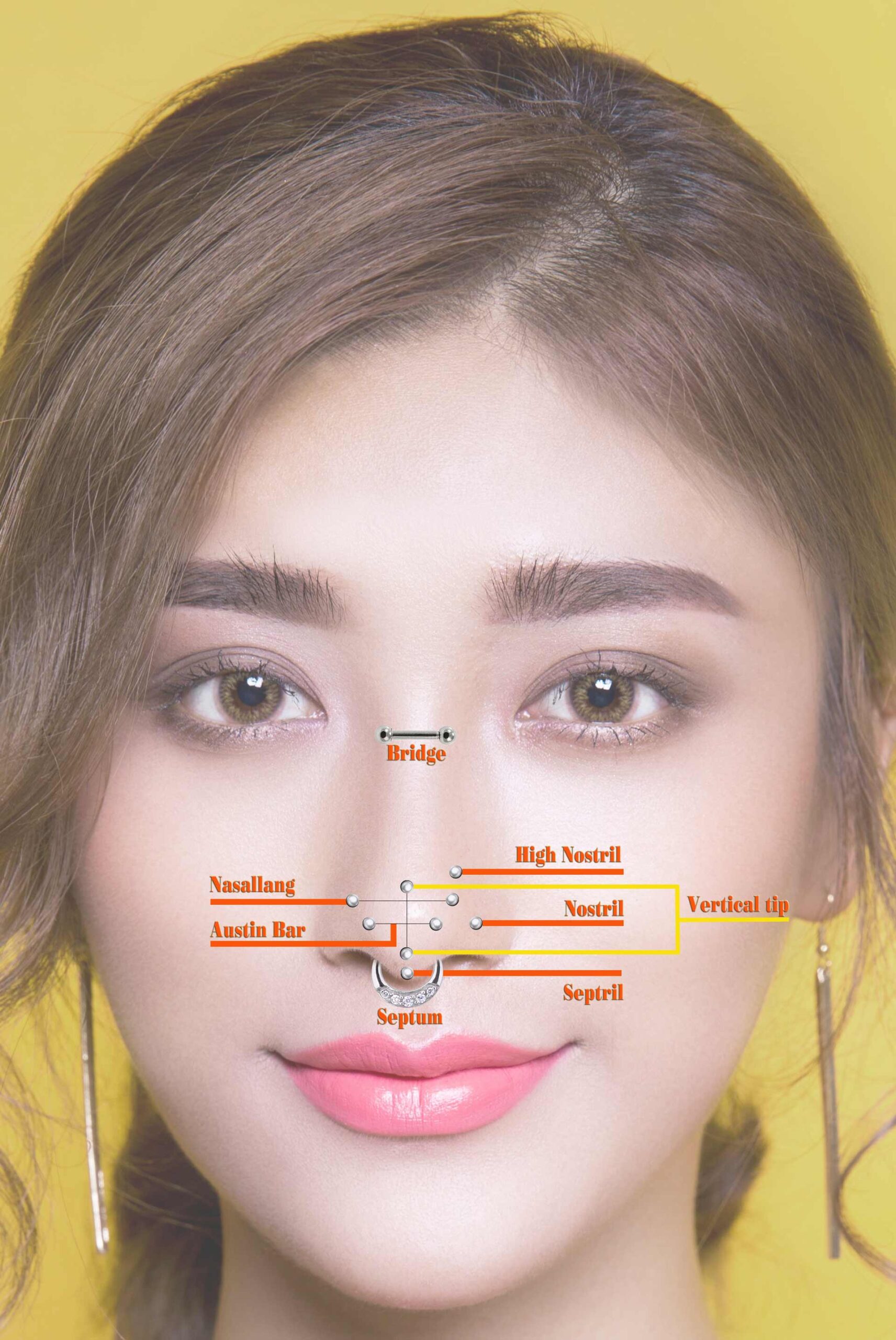
There are several types of nose piercings that are commonly practiced, including:
- Nostril piercing
- Septum piercing
- Bridge or surface piercing
- Nasallang piercing
- High nostril piercing
- Vertical tip piercing
- Septril piercing
Each type of nose piercing is unique and offers its own set of pros and cons. Below, we will discuss the most popular types of nose piercings and what you need to know about each one.
Nostril Piercing
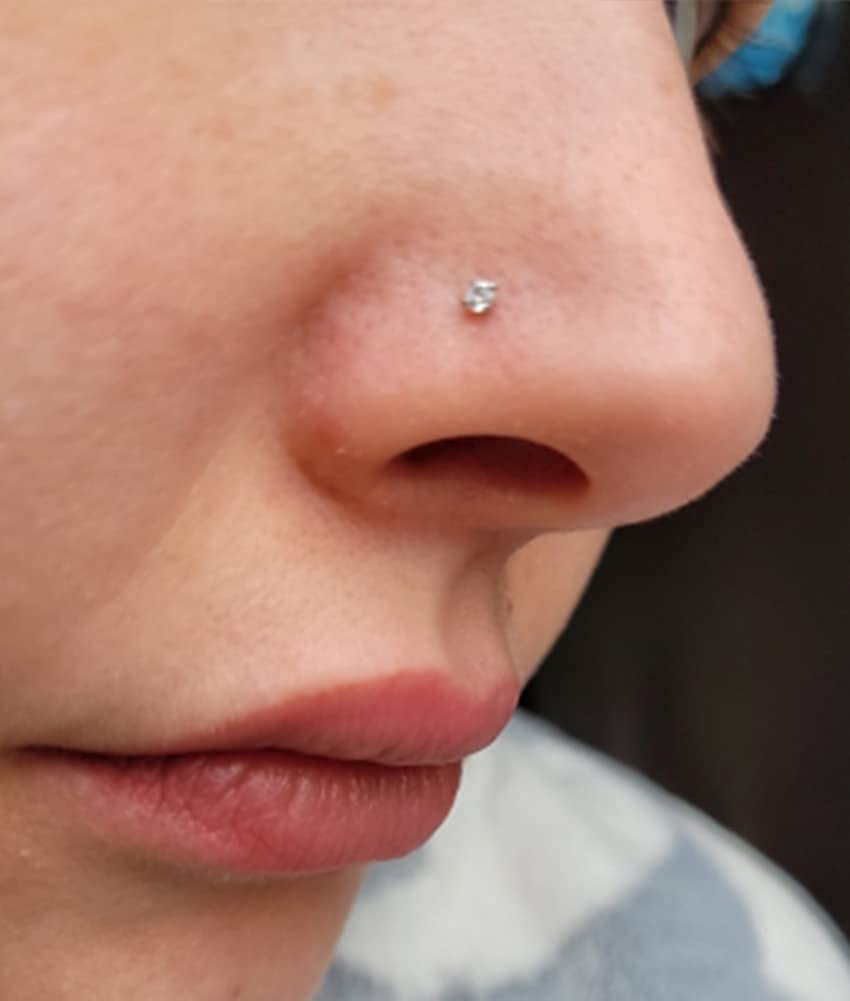
Nostril piercing is the most common type of nose piercing. It involves piercing the outside of the nose through the skin and cartilage of the nostril. This type of piercing is generally quick and relatively painless. Healing time can vary depending on the individual, but it typically takes 4-6 months to fully heal. One of the main advantages of a nostril piercing is its versatility. You can choose from a variety of different jewelry options, including studs, hoops, and rings. However, it is important to note that some workplaces may not allow nose piercings, so be sure to consider any professional restrictions before getting a nostril piercing.
Septum Piercing

A septum piercing is located in the middle of the nose, between the nostrils. Unlike a nostril piercing, which goes through the skin and cartilage, a septum piercing is placed through the thin strip of tissue that separates the nostrils. Healing time for a septum piercing can take up to 6-8 weeks, and during this time, it is important to avoid touching or moving the jewelry. One of the benefits of a septum piercing is that it can be easily hidden by flipping the jewelry up inside the nostrils, making it a good option for those who may need to hide their piercing for work or other reasons. However, septum piercings can be more painful than nostril piercings, and the healing process can be uncomfortable.
Bridge or surface piercing

A bridge piercing is located between the eyes, above the nose. It involves piercing the skin and tissue over the bridge of the nose. This type of piercing is more unusual and less common than other types of nose piercings, but it can be a bold and unique way to express your style. However, bridge piercings can be prone to rejection, which means that the body may push the jewelry out over time. It is also important to note that bridge piercings can be quite painful, and the healing process can take several months.
Nasallang Piercing
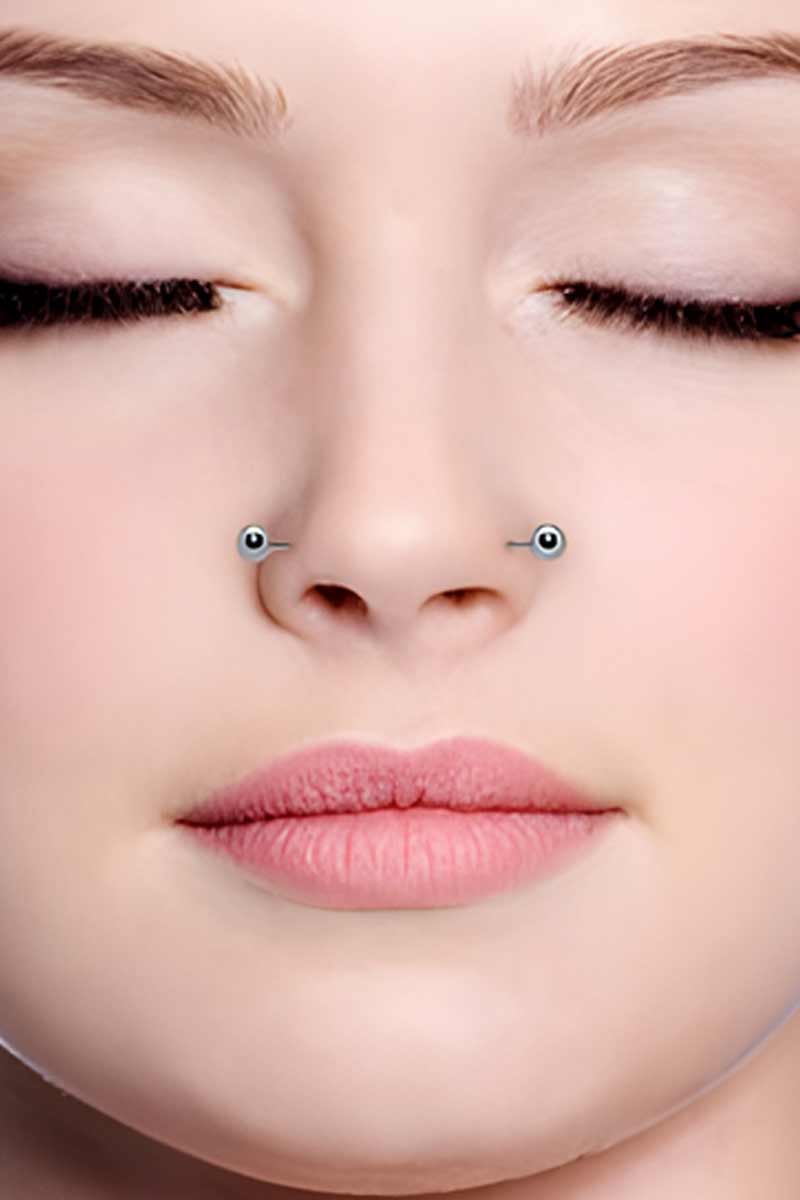
A nasallang piercing goes through both nostrils and the septum, creating a single piece of jewelry that connects all three piercings. This type of piercing is more complex and can take longer to heal than other types of nose piercings. However, a nasallang piercing can be an impressive and eye-catching statement piece. It is important to choose an experienced and skilled piercer for this type of piercing, as it requires a high level of precision and attention to detail.
High Nostril Piercing

A high nostril piercing is located higher up on the nose, above the standard nostril piercing. This type of piercing can be a subtle and stylish way to add some edge to your look. However, high nostril piercings can be more painful than standard nostril piercings and may take longer to heal. It is important to choose the right jewelry for this type of piercing to prevent irritation or discomfort.
Vertical tip piercing
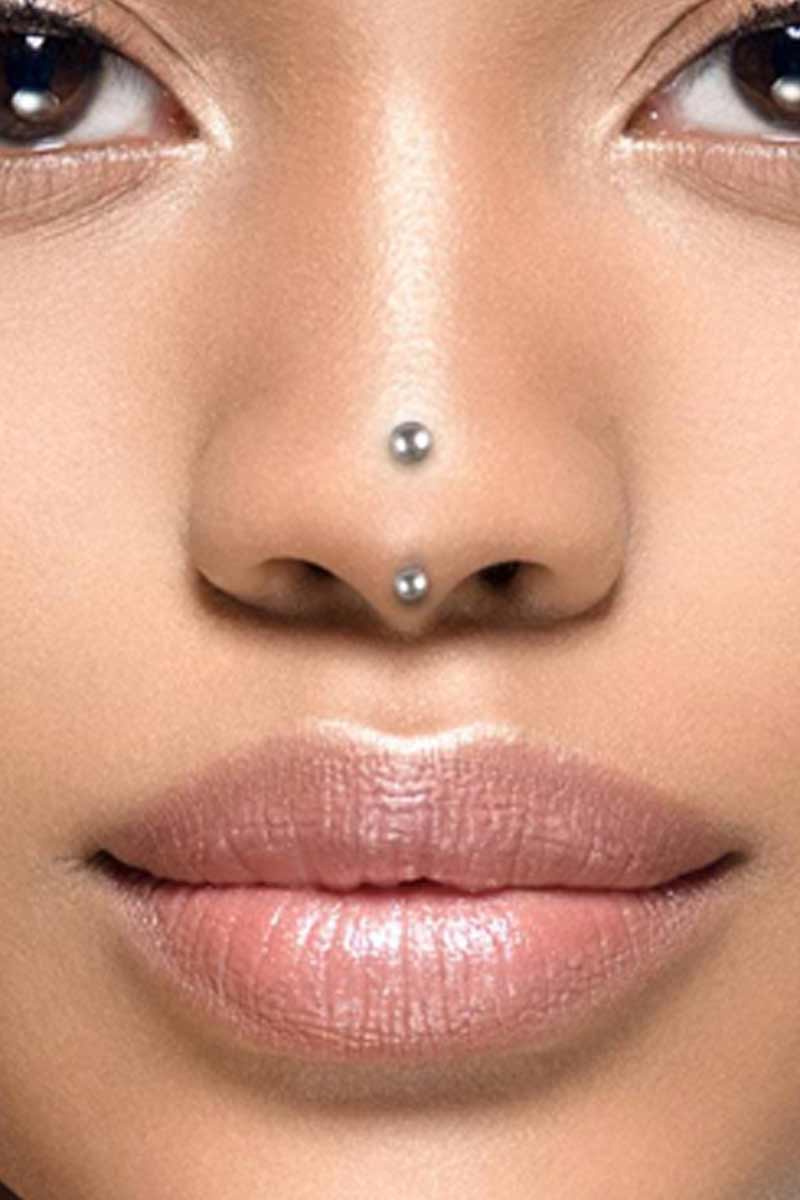
Vertical tip piercing is a unique type of nose piercing that goes through the tip of the nose vertically, from the top down. This piercing is considered to be more painful than other nose piercings due to the thickness of the cartilage at the tip of the nose. However, the results can be very striking and dramatic, making it a popular choice for those looking for a bold and unconventional look. One of the pros of this piercing is that it can be easily hidden by simply flipping the jewelry upside down, making it a versatile option. However, the healing process for a vertical tip piercing can be quite lengthy, and the risk of rejection or migration may be higher due to the thinness of the tissue at the tip of the nose. It’s important to carefully consider the pros and cons before deciding if a vertical tip piercing is right for you.
Septril piercing
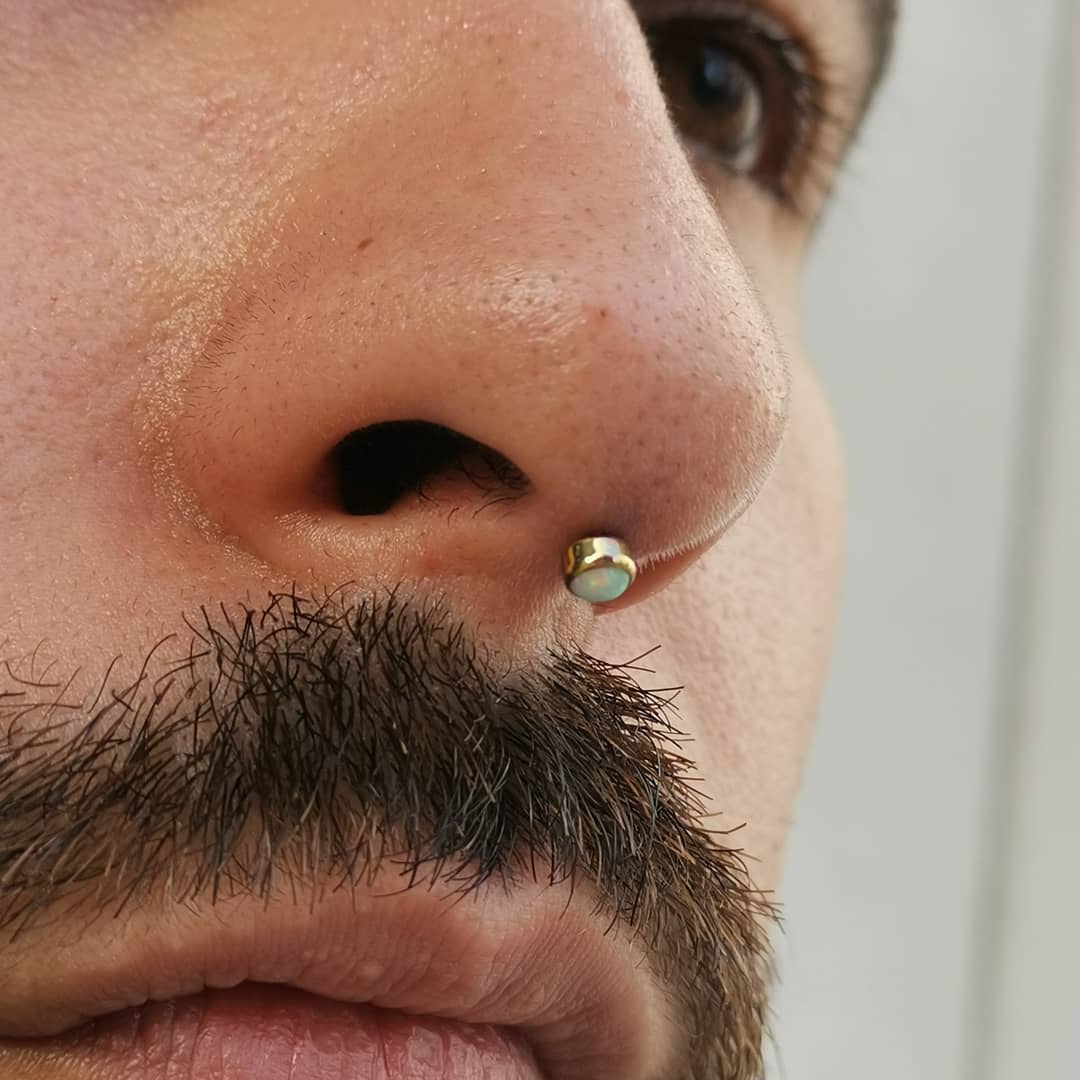
The Septril piercing is a unique type of nose piercing that combines elements of the septum and the nostril piercing. This piercing involves two separate piercings: one through the septum and one through the tip of the nose. The two piercings are then connected with a piece of jewelry, creating a distinctive look. Some of the pros of the Septril piercing include its unique appearance and the ability to wear a wide range of jewelry styles. However, it is a complex and difficult piercing to perform, so finding a qualified and experienced piercer is crucial. Additionally, the Septril piercing can take a long time to heal, and there is a risk of infection or other complications if proper aftercare is not followed.
Each type of nose piercing offers its own unique set of advantages and disadvantages. When deciding on a nose piercing, it is important to consider factors such as pain, healing time, and professional restrictions. By choosing the right type of nose piercing for your individual needs and preferences, you can achieve the look you want while minimizing discomfort and ensuring proper healing.
Factors to Consider When Choosing a Nose Piercing
When deciding on a nose piercing, there are several factors that you should consider. Below, we will discuss some of the most important factors to keep in mind when choosing a nose piercing.
Pain Level
One of the most important factors to consider when choosing a nose piercing is the pain level. While pain is subjective and can vary from person to person, certain types of nose piercings are generally considered to be more painful than others. For example, a septum piercing is typically more painful than a nostril piercing. If you have a low tolerance for pain, you may want to consider a less painful piercing option.
Healing Time
Another important factor to consider is the healing time for the piercing. Some types of nose piercings, such as nostril piercings, may heal faster than others, such as nasallang piercings. It is important to be patient and follow proper aftercare procedures during the healing process to prevent infection or other complications. If you have a job or lifestyle that may be impacted by a longer healing time, you may want to consider a piercing with a shorter healing time.
Professional Restrictions
It is also important to consider any professional restrictions that may prevent you from getting a certain type of nose piercing. While nose piercings have become more accepted in many workplaces and industries, there are still some environments where they may not be allowed. If you work in a conservative industry or have a job that requires you to interact with clients or customers, you may want to choose a piercing that can be easily hidden or removed if necessary.
Personal Style
Of course, personal style is also an important factor to consider when choosing a nose piercing. Different types of nose piercings can convey different styles and attitudes. For example, a septum piercing can be edgy and bold, while a nostril piercing can be more subtle and classic. Consider the look that you want to achieve and choose a piercing that complements your personal style.
Piercer Experience and Reputation
Finally, it is important to choose an experienced and reputable piercer for your nose piercing. Nose piercings require a high level of skill and precision to be done safely and effectively. Do your research and read reviews to find a piercer who has a good reputation and plenty of experience with the type of piercing that you want.
Prices
Price is an important factor to consider when deciding on a nose piercing. The cost of a nose piercing can vary depending on several factors, including the type of jewelry used, the store where the piercing is done, and the skill of the piercer. On average, the cost of a nose piercing can range from $30 to $80.
However, the price may be higher for more complex piercings or for those who opt for higher quality jewelry materials. The safer the materials used in the jewelry, the more expensive the piercing is likely to be.
For example, gold and titanium are considered safer materials compared to cheaper alternatives like nickel or brass. While it may be tempting to go for a cheaper option, it’s important to prioritize safety and choose a reputable piercer who uses high-quality materials. Ultimately, it’s important to factor in the cost of the piercing when making a decision and choose a piercing option that fits within your budget while still prioritizing safety and quality.
Choosing a nose piercing requires careful consideration of several important factors, including pain level, healing time, professional restrictions, personal style, and piercer experience. Taking these factors into consideration, you can make an informed choice and select the nose piercing jewelry and type that best suits your preferences and needs.
Aftercare

Aftercare is an essential part of the nose piercing process that can ensure a smooth healing process and prevent potential complications. It is crucial to follow the proper aftercare instructions for your specific type of nose piercing to avoid infections, scarring, or other issues.
Firstly, it is important to keep your hands clean when touching your nose piercing or cleaning it. Avoid touching the piercing with dirty hands, and wash your hands with soap and water before touching the piercing.
Secondly, make sure to clean the piercing twice a day with a saline solution or an antiseptic solution recommended by your piercer. You can use a cotton swab or a sterile gauze pad to apply the solution gently. Do not use alcohol, hydrogen peroxide, or other harsh chemicals, as they can damage the healing tissue and prolong the healing process.
Additionally, avoid swimming in public pools, hot tubs, or natural bodies of water for at least 4-6 weeks after getting your nose piercing. These places can harbor bacteria that can cause infections or irritations.
Moreover, avoid using makeup, facial cleansers, or other beauty products that can irritate or clog the piercing. It is best to avoid wearing tight clothing or accessories that may rub against or get caught on the piercing.
Lastly, be patient and allow your nose piercing to heal fully before changing the jewelry or touching it excessively. The healing time for nose piercings can vary depending on the type of piercing and individual healing ability. On average, nostril piercings take 4-6 months to heal, septum piercings take 6-8 weeks, and bridge or nasallang piercings take up to a year.
In summary, proper aftercare is crucial for the healing process and long-term health of your nose piercing. Follow the recommended aftercare instructions for your specific type of nose piercing, and be patient with the healing process. If you experience any unusual symptoms or complications, consult with your piercer or a healthcare professional immediately.
Choosing the right type of nose piercing is an important decision that requires careful consideration. Each style of nose piercing has its own unique set of pros and cons, and ultimately, the choice will depend on personal preferences, pain tolerance, healing time, and professional considerations.
Nostril piercings are the most popular and versatile option, making them a safe choice for beginners. Septum piercings are another popular choice, but they require a longer healing time and can be more painful than other types. Bridge piercings and nasallang piercings are more unique and daring options, but they require a skilled piercer and a longer healing time. Lastly, high nostril piercings are a stylish and subtle alternative to traditional nostril piercings, but they are more painful and may require more upkeep.
Ultimately, when deciding on a nose piercing type, it’s important to consider factors such as pain, healing time, placement, personal style, and professional considerations. It’s also important to follow proper aftercare instructions to avoid infection and promote healing.
In conclusion, nose piercings can be a fun and unique way to express oneself, but it’s important to carefully weigh the pros and cons of each type before making a decision. By understanding the different types of nose piercings and considering the factors involved, you can choose the right nose piercing that not only looks great but is also comfortable and easy to maintain.

